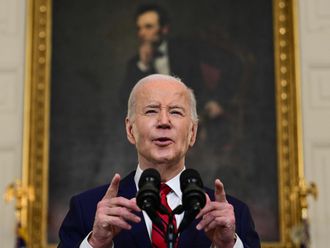
Often, the US EB-5 Immigrant Investor Program is confused and categorised interchangeably with Golden Visa programs available via other countries, such as Portugal and Spain. However, these are two very different programs in terms of applicability and outcomes, and there are important distinctions to note between the US EB-5 Program and the Golden Visas available in other countries. The term Golden Visa was first created as a defined visa category providing a temporary status to individuals wishing to invest in a country, which then eventually may turn into permanent residency or citizenship after a specific investment term and fulfillment of other requirements.
The United States EB-5 Program is not in fact a Golden Visa as the investment made into the US leads directly to a green card, which is actually US permanent residency. After five years, and if the individual has spent half the amount of time in the US (2.5 years out of 5), they may apply for citizenship and a US passport directly. Should an investor wish to maintain their permanent residency without a path to citizenship, they may land once every 6 months in the US for an unspecified amount of time.
This leniency in physical residency requirements makes the US EB-5 Program attractive to many foreign investors who may not want to move immediately and are simply planning for the future of their families while continuing to work or run businesses in their home country. It also differs from the Golden Visas of many other countries which require a minimum physical stay in the country in order to eventually translate the Golden Visa into a permanent residency or Citizenship.
On March 15, 2022, the US EB-5 Regional Center Program was reauthorised bringing about a new set of regulations. Many of these regulations aim to make the popular investment immigration program safer for investors. Measures include background checks on those involved in the program, proper registrations and audits with USCIS (United States Citizenship and Immigration Services), and disclosures made to investors.
Quicker entry into the US under the EB-5 Program
Another change which was made to the US EB-5 Program on March 15, 2022 was the allowance for concurrent filing of the I485 Adjustment of Status application while the I526 conditional green card application (EB-5 Application) is pending. The new regulation aims to improve efficiency, cut back on long waiting times, and allow quicker access to the US. Previously one would have to wait until approval of the I526, and then apply for Adjustment of Status afterward. This has caused circulation of concept of quicker entry into the United States, however, it is important to understand the intricacies of this rule change and whether it could apply to you.
Adjustment of status vs consular processing
At this time, there are two options for receiving your green card and adjusting your status. If you are already in the US on a valid visa status (dual intent visas such as H1B and L1, or tourist visas after 90+ days of continuous stays in the US) you may file for Adjustment of Status. This means you can file papers to receive the green card while within the US without having to leave. This filing also includes work authorization (EAD) and a travel document (Advance Parole). If you are located outside the US you will likely opt for Consular Processing, date is scheduled at your closest Embassy to your place of residence.
We are seeing wait times of up to a year for Consular Processing, and times of 10 months or even longer for Adjustment of Status. Since the I485 cannot be processed until the I526 is approved (although it can be concurrently filed), it is difficult to define accurate processing times until approval of I526 application.
Once a person applies for Adjustment of Status from within the US, it is inadvisable to leave the US or travel abroad during this time as the status of the individual changes from the valid visa status they were previously on to “pending green card” status. Essentially, they are between status.
Concurrent adjustment of status filing
For those already on a dual intent visa in the US like an H1B, it makes sense to file for Adjustment of Status immediately while the I526 is pending.
For those entering the US on a non-immigrant status like an F1 or B1/B2 visit visa, there are certain points to keep in mind. The Adjustment of Status cannot be filed until 90 days after last entry into the US. This waiting period is important as you are entering with a non-immigrant intent. Once the AOS is filed, you must wait for fingerprinting. This can take additional time to schedule and could mean the B1/B2 visit visa holder will need to stay in the US past the 6 months allowance period on this type of visa.
Please be aware of the risk that if the I526 happens to be denied for any reason, the B1/B2 holder will be out of status. This “overstay” could result in a ban to the US. If the I526 is approved, as we expect it to be, this should not be a problem.
Travel advisory
Generally, it is not advised to travel outside the US once an Adjustment of Status has been filed and while it is pending. Once fingerprinting is completed, one can technically exit the US, but should be back in the US before the I526 is approved. This timing can be tricky as there is no real way to tell for certain when an approval will be received. It is possible to enter back in the US once your online status has changed to “File is With an Officer”, however, the exact time for approval even upon this change of status can still remain uncertain.
Thus, you must be prepared to be in the US without work authorization or the ability to travel for several months.
Employment authorisation
When one applies for Adjustment of Status they may also file for Employment Authorization, which when approved, would allow the individual to work legally in the US. At this time, processing of Employment Authorization can take on average of 7 months or more.
Therefore, if one waits 90 days after entry to file the AOS and then an additional 7 months for work authorization, it could be up to 10 months before you are able to legally work in the US.
For those who don’t require employment, and can remain in the US for an extended period of time, this is a good option. For example, many times one parent may choose to be a primary applicant and include children as dependants. In this case, and where one spouse, does not require employment, this option can work and speed up processing times for the family.
Available only for primary applicants
Please note that this option applies only to primary applicants in the US. Therefore, children who are in the US on an F1 cannot take advantage of this concurrent filing unless the children themselves are the primary applicant. Alternatively, if the primary applicant has the ability to do the process outlined above, they can take advantage of this and speed up the process also for dependents.
Expedited processing
The EB-5 Program in itself is not considered an expedited process to attain a green card although it is considered to be an easy path to a green card and eventual citizenship in the US. So long as a person has no serious criminal background, can invest the total amount of $800,000 USD plus fees (all paid in parts), and these funds have come from a legal source, there should be no concern for rejection.
However, the average processing time for a green card through the EB-5 Program is 24 to 36 months. The only way this time can be expedited is by investing in a project which is eligible for fast track processing through the government.
Only a few projects in certain industries which the government deems of national importance, will gain expedited processing approval through USCIS. This can cut down processing time by more than half so that the average processing time for a fast track project is 12 months or less.
As the region’s most trusted and experienced immigration advisors, Step Global has worked with such expedited projects under the EB-5 Program. In such cases, we have already received approvals for fast track processing by USCIS on our clients’ applications.
At Step Global, we understand that each situation is unique and that applying for the EB-5 Program also requires some planning and strategising. Our lawyers are happy to sit down with you to properly put a plan in place for your US EB-5 journey. Under the aegis of Preeya Malik, who herself is a U.S. licensed lawyer specialised in the US immigration statutory framework, we have 100% track record of approvals and over 12+ years of experience in the EB-5 industry, making us well positioned to provide clients which the expertise necessary for success.
Our extensive experience and vast network within the immigration industry, have allowed us to continue filing EB-5 applications at $500,000 USD through the Direct EB-5 route even after the expiry of the Regional Center Program in June 2021, enabling us to lead the market in this region by continuing to provide fast-tracked green card processing options to the applicants when most of the EB-5 industry was at a standstill between July 2021 and March 2022.
We continue to work with interesting EB-5 projects eligible for expedited processing under the new $800,000 USD regulations as well. We are encouraging aspiring applicants to be prepared to move forward swiftly once USCIS starts accepting EB-5 applications again in mid-May after a 60 day moratorium enacted by the government to allow projects to comply with new regulations as of March 15, 2022. Prospective clients should begin to take a look at available projects and shortlist the most suitable options as these projects will be prepared to take investors at the new investment amount of $800,000. Spots in such projects are limited and will surely fill up quickly while we await the return of the EB-5 program in May.













